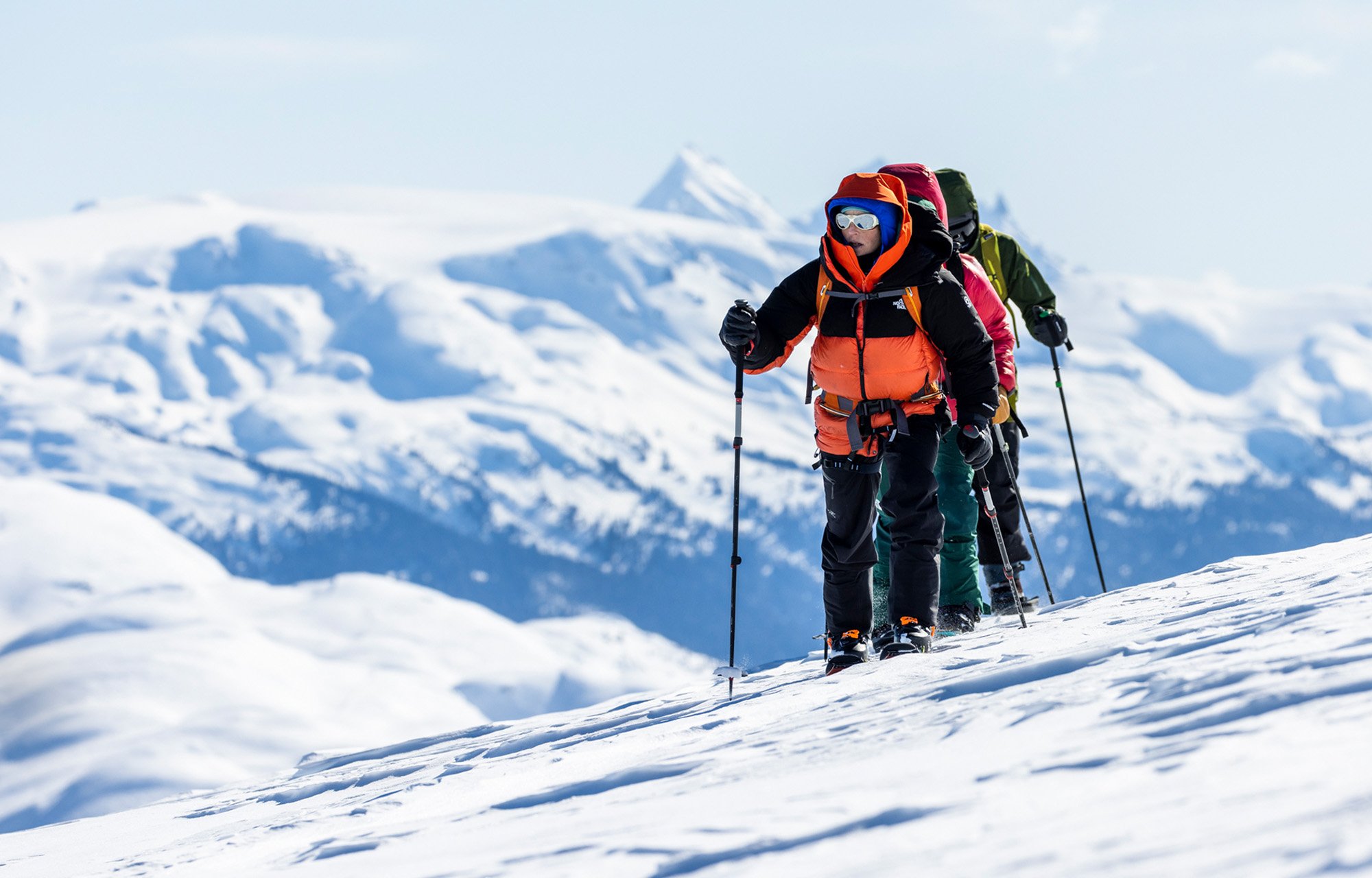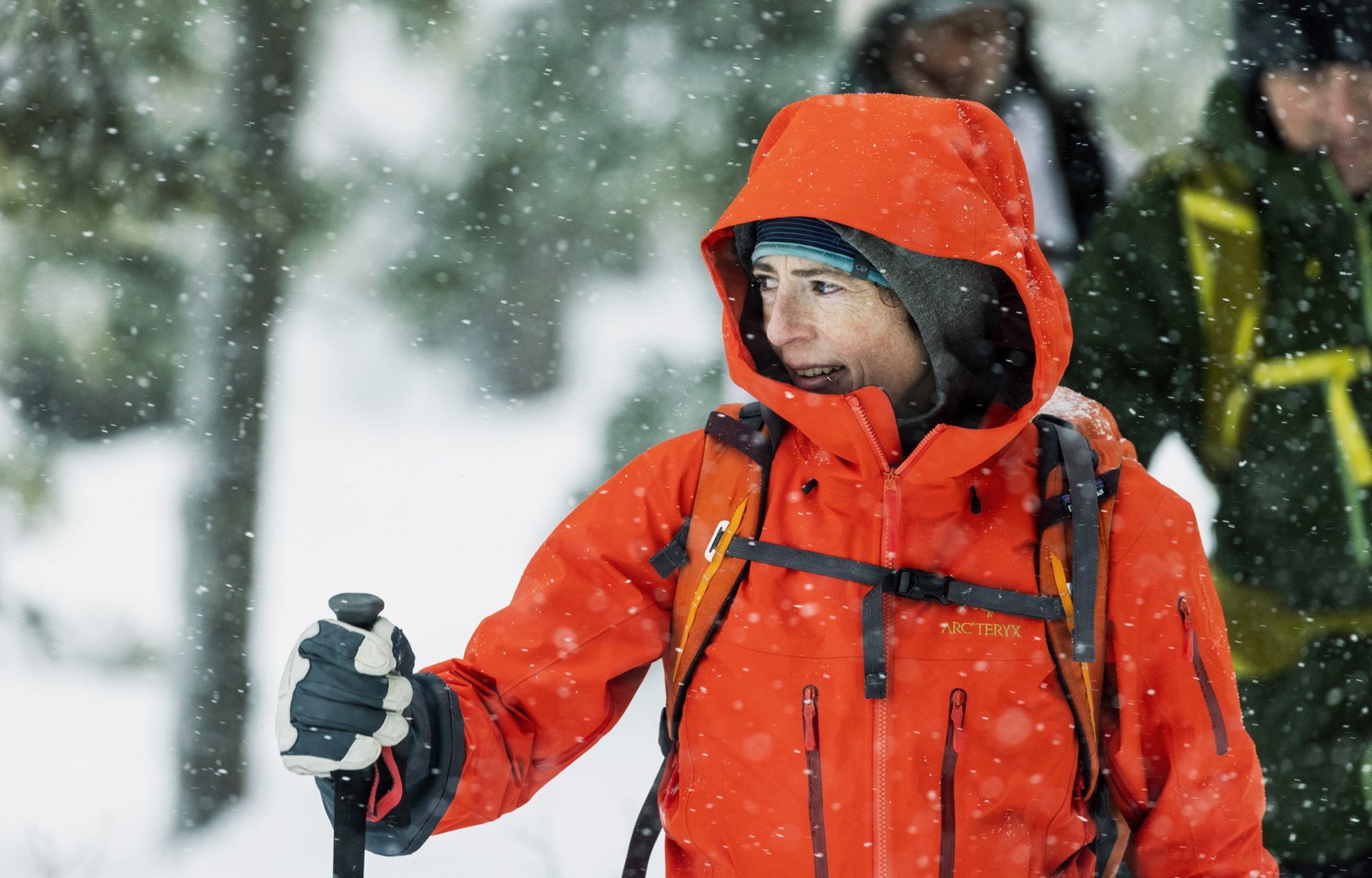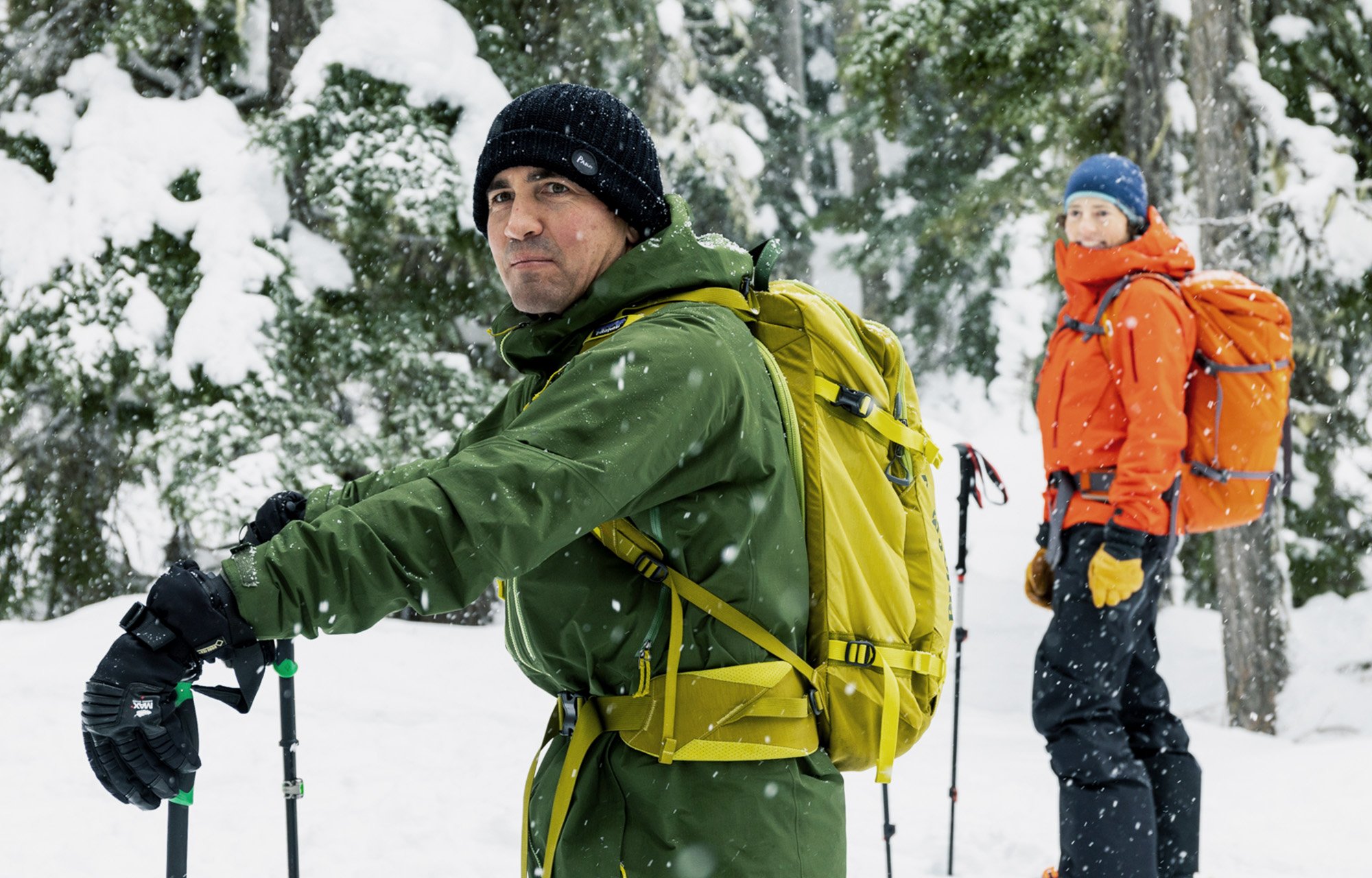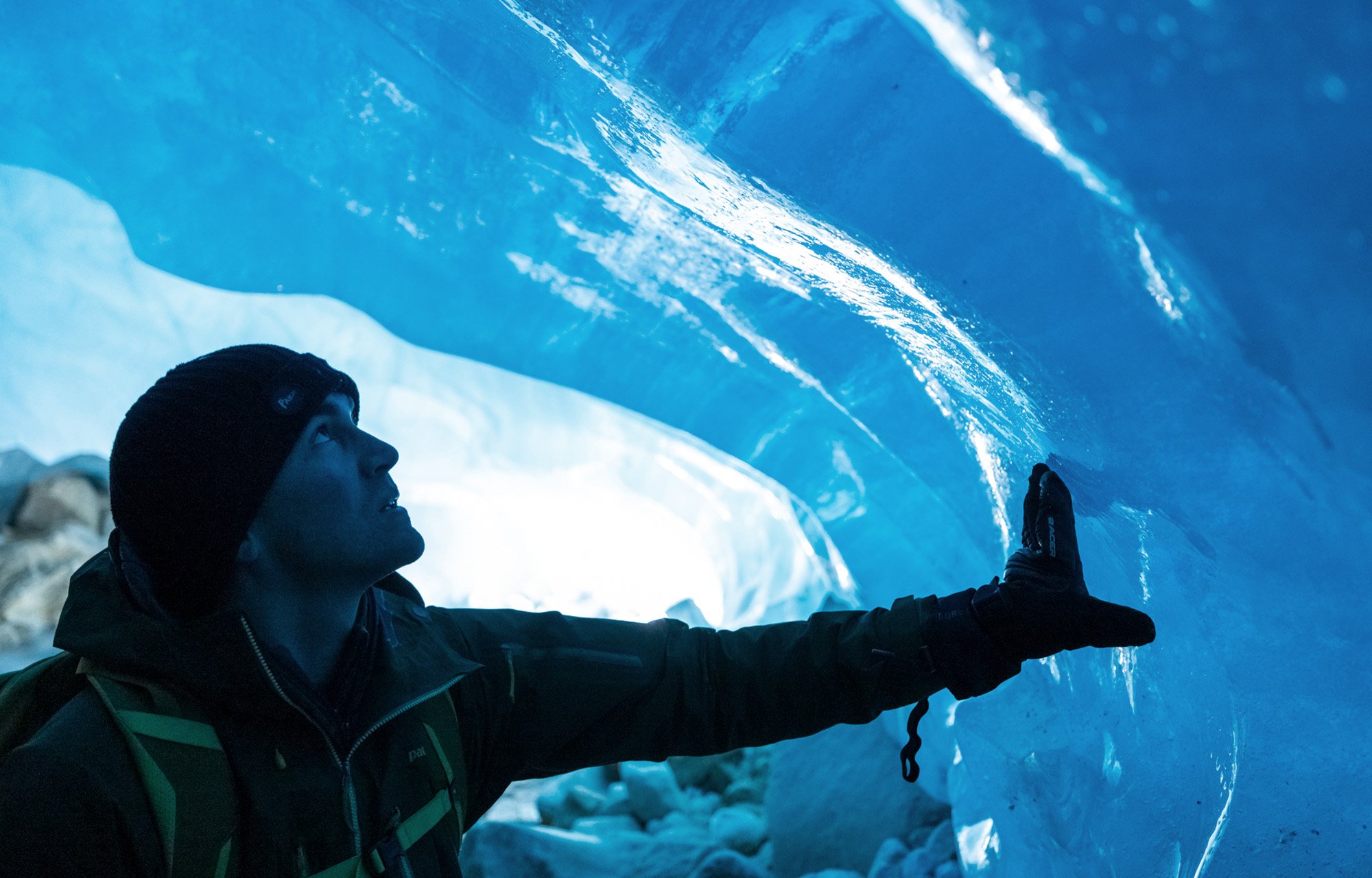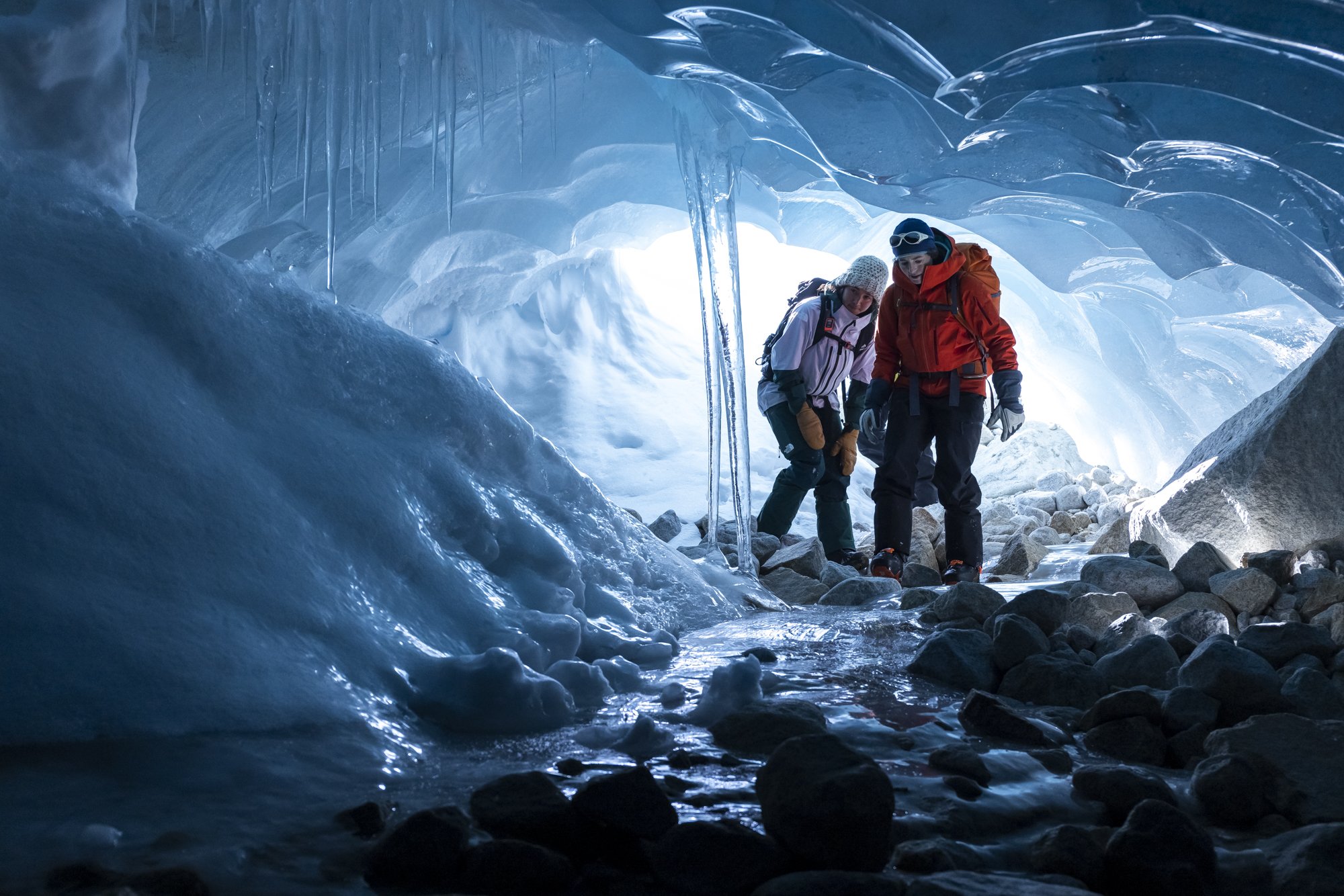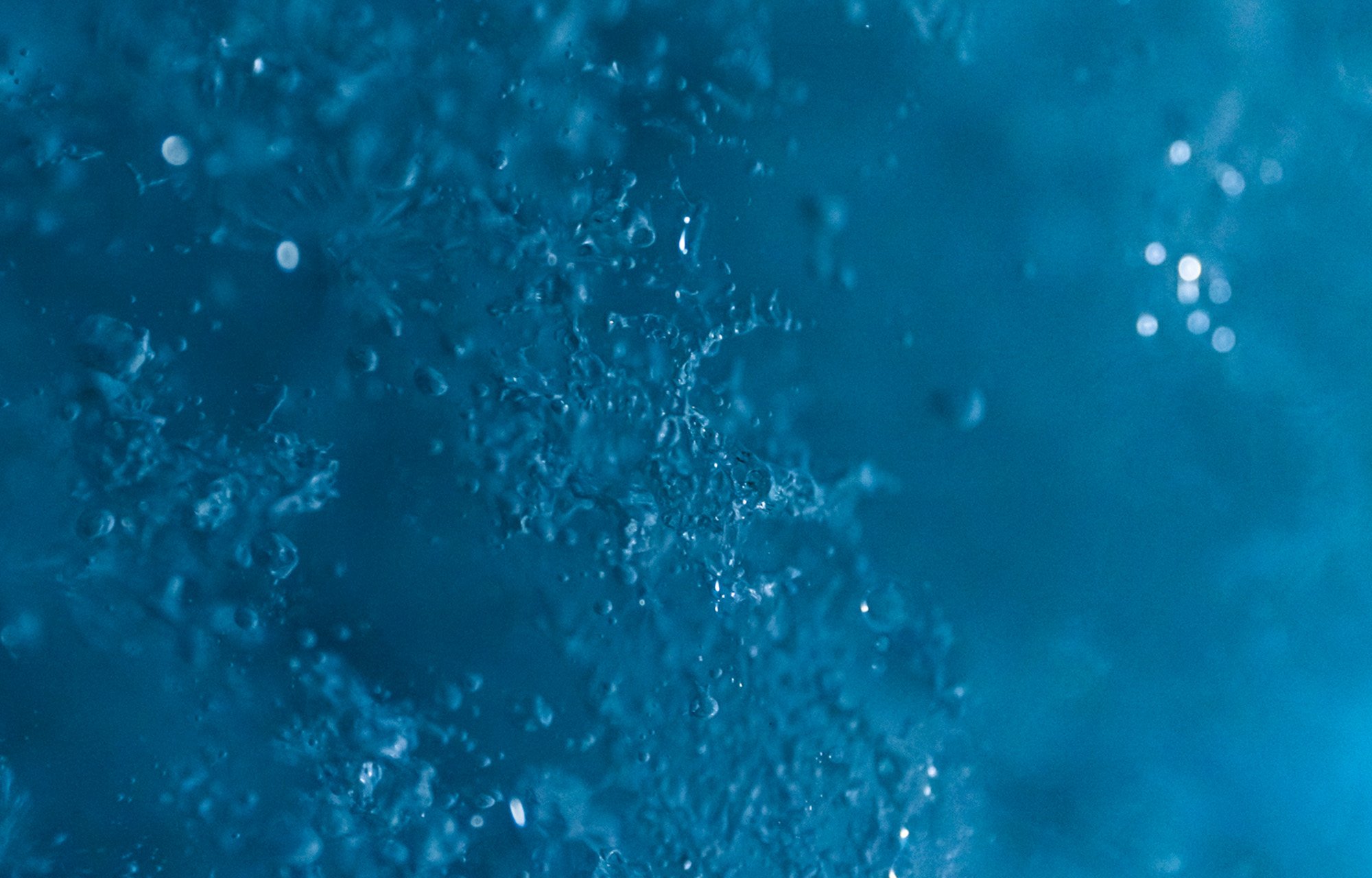EXPLORING ICE FIELDS WITH Greg Long & Ali Criscitiello
TAKE A JOURNEY WITH A SURFER AND A glaciologist HIGH into the cryosphere
Parley collaborator Greg Long traded big waves for frozen water in a November 9, 2023, guest edition of our Wavelengths newsletter. If you missed it, below you can retrace his steps through the ice fields of British Columbia and into a Q&A with ice core scientist Ali Criscitiello. If you’d like Parley updates sent directly to your inbox, subscribe here.
“I had lost feeling in my feet, and the thin arctic air set my lungs ablaze with each inhale as I fought to catch my breath, but I had to keep moving. It was the only way to stay warm, and I needed to keep pace with my expedition partners as I had assured them before the trip that I could and I would. One foot at a time, I kept cadence, following the tracks in the snow set before me by professional snowboarder Taylor Godber and world renowned mountaineer and ice scientist Ali Criscitiello.
My entire life had been devoted to the ocean, following my passion of surfing, and later working alongside organizations like Parley, to raise awareness surrounding its health and fragility and dire need for protection. I could count on my near frostbitten fingers the number of times in my life I had voluntarily taken a trip that didn’t in some way involve the ocean. Now, here I was, ascending a glacier in interior British Columbia, a metaphoric fish out of water. But knowing the intrinsic connection between the mountains and ocean, I had jumped at the opportunity to join this adventure with one of the world’s leading glaciologists. I came to learn there is a profound depth of wisdom found within the ice and those who study it that can help us better understand the landscape of the current climate crisis, and guide us on a path towards reinstating the harmonious balance in which we are meant to be living with the natural world…
You can learn more about the expedition that brought me to Pemberton Icefield in a recent Talisker x Parley film. Below, I asked Dr. Criscitiello about what drives her career and what a closer look at the ice can reveal about our fast-changing world.”
— Greg Long
Ali with extracted ice core
Q&A
How do ice cores record the history of our planet and what can they tell us about climate change?
Ice cores are one of our most powerful tools for looking back at our Earth’s climate history. There are other ways to look back in time and unravel the climate of the past, such as sediment cores, corals and tree rings, but ice cores are unique in that they record not only the chemistry of the snow that falls in a certain area, but as it compacts into ice at depth, we are also trapping the actual bubbles of atmosphere so we can measure the gas content back in time. This gives unique power to not only tell about changing environmental conditions in the past from the liquid chemistry of the cores, but also changing gases in the atmosphere. The most obvious being CO2 and greenhouse gases and how those have changed over time.
Everything is interconnected, from the mountains to the ocean. How do you see this reflected in the ice?
I love this question because it gets at my niche area of expertise within ice core science, which is looking at the chemistry of land-based ice cores from ice sheets and glaciers, and looking at their chemistry to understand past sea surface and ocean conditions. I have done this by developing sea ice proxies in the ice cores which means there are things found within that reflect ocean conditions, but they are preserved in the snow that gets deposited. These examples show how beautifully everything is interconnected and particularly how the ice on our planet is directly linked to the ocean. Not only is this interconnectedness there in terms of what we can read in an ice core, but also in terms of how these two parts of Earth’s climate system impact each other. The ice-ocean atmosphere system that a lot of scientists talk about is very much an interplay between parts that all impact one another.
The melting cryosphere is called "the sleeping giant" of greenhouse gas emissions. Can you explain this further?
The frozen parts of land like the Canadian Arctic for example, have a tremendous amount of methane and other gases trapped within the soil. These permafrost areas which have been frozen for many years are starting to thaw and melt and will release these gases into the atmosphere. In terms of future greenhouse gas emissions, there are a number of big and frightening unknowns as to what will actually happen if and when this takes place.
What are some of the environmental contaminants you've found in ice cores?
I've worked with scientists at Environment and Climate Change Canada to look at various classes of chemicals in ice cores. One that most have heard of — because it is something we measure in drinking water and care about a lot in terms of human health impacts — are PFAS, or perfluoroalkyl substances. They are a large class of chemicals with a lot of unknown impacts on humans, animals, plants, and ecosystems, but we are now paying close attention to them because we know of many harmful impacts on human health.
This is one class of chemical that we look for across the Canadian High Arctic in various ice caps, as well as the Columbia Icefield which serves as drinking water for regions downstream. We also look for and find legacy contaminants, which are contaminants that are no longer in use because they have been banned, but are transported in the atmosphere and deposited in the snow. In a melting scenario, these chemicals that are no longer in use or production are melting out of snow packs from previous depositions. One such example is DDT, the common pesticide that was used frequently but has since been banned.
“Ice cores are one of our most powerful tools for looking back at our Earth’s climate history.”
Dr. Ali Criscitiello — Mountaineer & Ice scientist
What questions guide your research right now?
The environmental contaminate work I just spoke of is definitely a high priority of mine. The question that guides the work is how are these contaminants being transported globally, and then piecing together where they are coming from. The questions from there are: what does that mean for impacts on wildlife and food and water sources for communities? There is a direct human link with many of the research questions. Other projects are much more focused on reconstructing climates of the past. Understanding how wildfire frequency has changed over time is just one example of dozens of questions we are asking that the core samples can tell us.
Can you tell us about the challenges of extracting, transporting and analyzing these ice cores?
The places we study are all very remote. You can’t even fly to some of them because they are at such high altitudes. We need to ski or climb. There are complex logistical and safety considerations to make both for creating a working environment for the team in such extreme conditions, and the successful return of the ice back to the lab. It always involves an entire team of skilled individuals to pull these expeditions off.
Why did you choose to study ice?
Before I realized that I wanted to specialize in this academically, I had already fallen in love with the frozen parts of our planet as a mountaineer, skier and climber. I was a U.S. climbing ranger and mountain guide for years living and working in these places that I loved, and simultaneously seeing them change. In particular, Olympic national park in Washington, where I was first a climbing ranger. I was struck over the course of multiple summers witnessing changes in the glacier and ice pack up on Mt. Olympus. I was seeing an increase in avalanches and rockfalls as the landscape was destabilizing due to warming. I credit my love of these places and personal observations to how they were changing to my ultimate decision to go back to school and specialize in what I do now.
What has been the most eye-opening moment in your career?
I think the environmental contaminate work I am currently doing, partly because it is so new to me, and because it is just shocking to analyze chemicals in ice cores we have never seen before, and then be able to piece a story together in terms of how they were deposited, and why the rates are increasing in the last decade or two.
What keeps you motivated and inspired in your work through this pivotal moment in challenging times?
Youth. I am very inspired by the younger generations and watching the power that young voices have to mobilize people into action. I am also very moved and inspired by the youth in the program I helped found, Girls* on Ice Canada. Watching the powerful impact that stepping into these kinds of landscapes for the first time can have, the awe they inspire, and immediate desire to protect them is very, very moving.
What climate actions, in your opinion, should people prioritize? What's your call to action?
Of course, make changes in your own life that are synergistic with your own values and reduce your footprint. But I think where the real power lies is in trying to shift the policy needle. We need enormous large scale policy change especially across North America in a very short time frame to make the difference that is needed. The next few years are a pivotal moment in terms of our Earth’s climate. If anyone is looking for a singular resource, I would point them to the latest IPCC report (International Panel on Climate Change). There is a succinct summary for understanding what needs to be done on what time scale.
What was your highlight from the Talisker expedition to Pemberton Icefield?
Being out in a wild landscape with you and Taylor…both incredible athletes but more important, people who have a deep love and commitment to preserving the environment. It was powerful for me to step out of the science bubble and just be in the wild landscape, both drilling an ice core and also just skiing and enjoying it with people who are focused on different objectives but share the same values and drive.
How can exploration, be it for science, for sport or for adventure, help protect this ocean planet?
The first step to environmental stewardship is falling in love with these places and that can happen through adventure and exploration. When we fall in love to the point where we feel like we can’t live without them, that is where change starts to happen. You don’t have to dedicate your entire life to climate science or whatever else it may be, but simply making changes in our own life and meaningfully contributing to our own community is enough.

